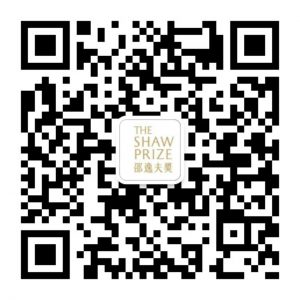The Shaw Prize in Mathematical Sciences 2025 is awarded to Kenji Fukaya, Professor at the Beijing Institute of Mathematical Sciences and Applications (BIMSA) and the Yau Mathematical Sciences Center (YMSC), Tsinghua University, PRC, for his pioneering work on symplectic geometry, especially for envisioning the existence of a category — nowadays called the Fukaya category — consisting of Lagrangians on a symplectic manifold, for leading the monumental task of constructing it, and for his subsequent ground-breaking and impactful contributions to symplectic topology, mirror symmetry, and gauge theory.
In classical mechanics, the time evolution of a physical system is described as the flow over phase space determined by a Hamiltonian function. In the 1960s, Arnold proposed conjectures in order to study the lower bound of the number of periodic solutions of the flow when the Hamiltonian is time-periodic. In modern mathematics, phase spaces are generalised to symplectic manifolds. A refined conjecture concerns a lower bound of the number of points of intersections of two Lagrangian submanifolds on a symplectic manifold.
In the 1980s, Floer initiated the Lagrangian Floer theory as an approach to tackling Arnold’s conjecture based on the idea of infinite-dimensional Morse theory. Under some assumptions on a symplectic manifold and Lagrangian submanifolds, Floer constructed the Floer homology from the space of solutions to a nonlinear partial differential equation, called the moduli space, and he applied it to solve the conjecture of Arnold in some special cases. However, the general case remained difficult because the moduli space may be highly complicated and singular without these assumptions.
Fukaya, with his collaborators Oh, Ohta, and Ono, established and significantly extended the Lagrangian Floer theory, which is one of his main achievements.
Around 1993, based on his idea of Morse homotopy, Fukaya discovered a higher algebraic structure in the complicated moduli space, and proposed a magnificent vision assigning an A-infinity category to any symplectic manifold, nowadays called the Fukaya category.
At that time, much of what was needed to realise his vision was missing. One of the main difficulties was dealing with the singularities of the moduli space. Fukaya introduced and developed the theory of Kuranishi structures, initially in collaboration with Ono and later with Oh, Ohta, and Ono, establishing a way to attach a virtual fundamental chain to a singular space equipped with a Kuranishi structure, and to build the intersection theory of the chains. They overcame many more difficulties one by one. This achievement is a tour de force.
The Fukaya category, besides its internal beauty, is a highly efficient tool in symplectic topology. Indeed, Fukaya and his coauthors obtained new results on the non-displaceability of certain Lagrangian submanifolds and constructed new quasi-isomorphisms on the groups of Hamiltonian diffeomorphisms of some symplectic manifolds.
The Fukaya category has attracted the interest of many outstanding mathematicians in various fields. One significant reason is Kontsevich’s homological mirror symmetry conjecture formulated as an equivalence between the Fukaya category of a Calabi–Yau manifold and the derived category of coherent sheaves on its mirror manifold. Fukaya has made transformative contributions to the development of mirror symmetry notably by proposing family Floer homology.
Earlier on, Fukaya made essential contributions to Riemannian geometry and gauge theory, in his single-authored works and in collaborations with Cheeger and Gromov, and with Yamaguchi.
Recently, Fukaya, in collaboration with Daemi and Lipyanskiy, made spectacular progress on the Atiyah–Floer conjecture concerning Floer homology on 3-manifolds based on the Lagrangian Floer theory, which was actually one of his original motivations for introducing the Fukaya category.
Mathematical Sciences Selection Committee
The Shaw Prize
27 May 2025, Hong Kong
